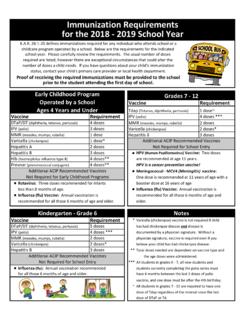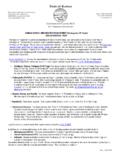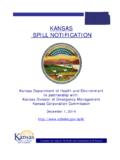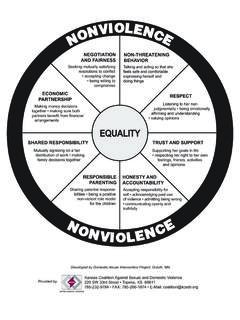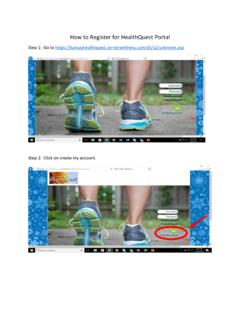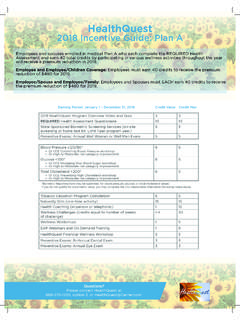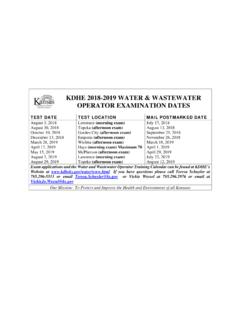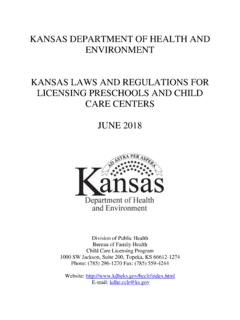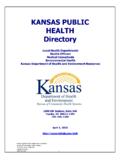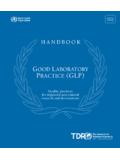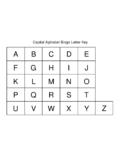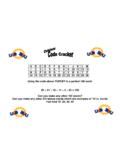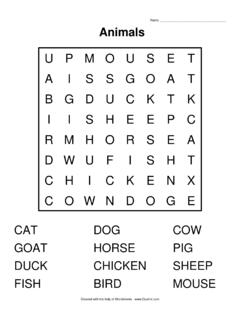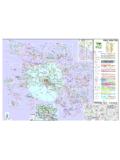Transcription of nu m ber of d o s e s g ive n in p re vious y ea rs. V a …
1 KANSAS LICENSED CHILD CARE FACILITIES AND EARLY CHILDHOOD PROGRAMS OPERATED BY. SCHOOLS. IMMUNIZATION REQUIREMENTS 2018-2019 SCHOOL YEAR. Immunization requirements and recommendations for the 2018-2019 school year are based on the Advisory Committee on Immunization Practices (ACIP) recommendations. The current immunization schedules, including catch up schedules, may be found on the Centers for Disease Control and Prevention Immunization Schedules webpage. The best disease prevention is achieved by adhering to the recommended schedule. However, if a child falls behind, the minimum interval schedule must be enforced. To avoid missed opportunities, immunization providers may use a 4 day grace period per age and interval between doses.
2 In such cases, these doses may be counted as valid. 28-1-20 defines immunizations required for children attending child care facilities licensed by KDHE or early childhood programs operated by schools. The complete regulation is published in June 26, 2008 Kansas Register. Diphtheria, Tetanus, Pertussis (DTaP): Five doses required. Doses given at: Dose 1: 2 months, Dose 2: 4 months, Dose 3: 6 months, Dose 4: 15-18 months (4th dose may be given at 12 months provided at least 6 months after dose 3) and Dose 5: prior to Kindergarten entry. Four doses are acceptable if Dose 4 is given after 4 years of age. Poliomyelitis (IPV/OPV): Four doses required. Dose 1: 2 months, Dose 2: 4 months, Dose 3: 6 months, final dose must be given 6 months after 3rd dose, after 4 years of age and prior to Kindergarten entry.
3 Three doses are acceptable with one dose after 4 years of age, 6 months between 2 nd and 3rd dose, and final dose prior to Kindergarten entry. Measles, Mumps, and Rubella: Two doses required. Dose 1: 12-15 months and Dose 2: prior to Kindergarten entry. Minimum age is 12 months of age and interval between doses may be as short as 28 days. Hepatitis B: Three doses required. Dose 1: given at birth, Dose 2: 2 months, and Dose 3: 6-18 months of age. Varicella (chickenpox): Two doses required. Dose 1: 12-15 months and Dose 2: prior to Kindergarten entry. Minimum age is 12 months of age and interval between doses may be as short as 28 days. Children less than 13 years of age are recommended to have a 3 month interval between doses however; second dose is valid when administered 28 days after first dose.
4 No doses required when student has history of varicella disease documented by a licensed physician. Haemophilus influenzae type b (Hib): Four doses required for children less than 5 years of age. Dose 1: 2 months, Dose 2: 4. months, Dose 3: 6 months, and Dose 4: 12-15 months of age. Total doses needed for series completion is dependent on the type of vaccine administered and the age of the child when doses were given. Pneumococcal conjugate (PCV): Four doses required for children less than 5 years of age. Dose 1: 2 months, Dose 2: 4. months, Dose 3: 6 months, and Dose 4: 12-15 months of age. Total doses needed dependent on the age of the child when doses were given. Hepatitis A: Two doses required for children less than 5 years of age.
5 Dose 1: 12 -23 months of age, Dose 2: 6-18. months after dose 1. Children 24 months and older who have not received any doses must receive 2 doses spaced 6 months apart. Legal alternatives to school vaccination requirements are found at 72-5209. In addition to the immunizations required for children attending child care facilities licensed by KDHE and early childhood programs operated by schools, other vaccine recommendations are: Rotavirus: Three doses recommended for < 8 months of age; not required. Influenza: Annual vaccination recommended for all ages > 6 months of age. Number of doses is dependent on age and number of doses given in previous years. Vaccination efforts by school and public health officials, immunization providers and parents are key to the success of protecting our children and communities from vaccine preventable disease.
6 Thank you for your dedication. Rev. 3/29/18.
